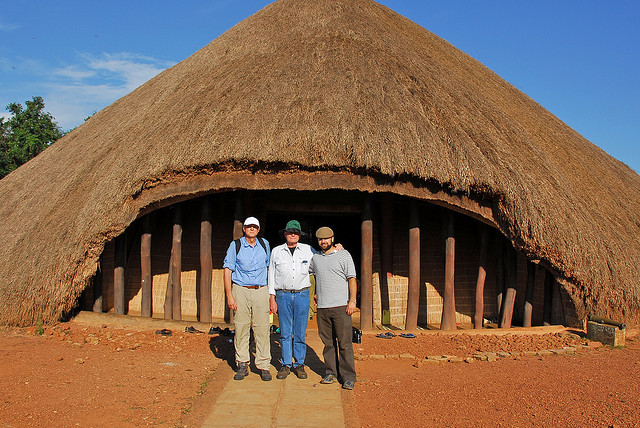Cultural Tourism
Cultural tourism is the journey of people to specific destinations in Uganda that offer cultural attractions including historical sites, cultural events, and shows with aim of acquiring new knowledge and experiences that meet the intellectual needs and individual growth of the traveler. Cultural tourism is a form of tourism that allows tourists to be immersed in local cultural related activities such as rituals and festivities. Cultural tourism development is community based, participatory and designed to improve the economic and social wellbeing of local residents.

Uganda is blessed with abundant wildlife, birds of all types, unique features and a fascinating cultural heritage which differs among kingdoms, chiefdoms that exist in the country. Uganda features four major traditional and well-organized kingdoms which include Buganda, Busoga, Bunyoro, and Toro. However there are several small communities and in total Uganda has over 56 tribes and these include Banyakole in Western Uganda famed for their longed horned cattle, Karamojong in North East bordering Kenya and South Sudan, Batwa pygmies in Bwindi, Basoga in Eastern Uganda among others. According to the 2014 Uganda population and Housing census, approximately two-thirds of the population is Christians and the other third are Moslems and followers are of traditional African religions. Uganda culture is made up of a diverse range of ethnic groups and there are several languages spoken in Uganda. The main languages are Bantu languages, Nilotics languages, Swahili and English [the official language].
In Uganda, different ethnic groups have come up with their dressing styles in an effort to identify themselves from others. The cultural dress code is diverse but kanzu is the national dress of men while in central and Eastern Uganda and women wear gomesi. Women from the west, northwest drape a long cloth around the waist and shoulders called Suuka. Women from the southwest wear a long baggy skirt and tie a short matching cloth across their shoulders. Each tribe in Uganda has its own traditional dance, for example, Bagisu have the Imbalu dance during their circumcision ceremonies, Banyankole perform their kitagururo dance, the Alur people from the West Nile have the traditional Agwal dance, Acholi have Bwora and Otole dances, the Banyoro have their Runyenye and many others. Ugandan cultures also have unique cuisines that are amazing to explore for example the Eshabwe, a Banyankole sauce prepared without fire, Luwombo a traditional dish by the Baganda, Atapa (millet bread) popular with the Iteso and Marakwang a sour vegetable used by the Acholi.
Music is a source of informal education in Uganda, therefore, important messages and ideas are communicated through dance and drama. Each ethnic group has its musical history and songs are passed down from generation to generation. Lamellophone thumb piano, harp, xylophones are some of the commonly played instruments. The drum being the common instrument in Africa, it dominates Uganda in symbolism to African culture and the drum is made from animal skin for example goats, cows, and many others. The drum is also used as a tool for sending particular messages to the intended audience, for example, the use of drums for the last funeral rites, circumcision, king installation, traditional worship among others.
Cultural Sites in Uganda
Cultural sites in Uganda include Kasubi Royal Tombs. These tombs in Uganda have located 5km from Kampala the capital city on Kasubi hill. The Kasubi royal tombs have been recognized by UNESCO as a World Heritage site and the tombs are the burial grounds for the kings of Buganda kingdom referred to as Kabaka. A lot of royalty and respect are given to Kasubi tombs and ancient Ganda rituals have been performed in this place.
Igongo cultural center. It is near Mbarara town and is a great stop for a culturally fulfilling experience when visiting Uganda. There is a well-researched museum depicting the history of Ankole and the great way of life of the Banyakole Kabale Arts Centre. This sums up the Bakiga way of life in a small museum that has historical and traditional highlights of how the Bakiga resisted the colonialists, how virgins were punished and controversial cultural practices and beliefs of how a woman was a clan property.

Other cultural sites include Sezibwa falls, Namugongo shrine, Nakayima tree found in Mubende district, Nyero rock paints situated in Ngora, Kabaka’s lake, Nkokonjeru tombs located in Kakiika, Uganda national museum, wamala tombs, Katereke prison ditch, and many other places that depict culture.


